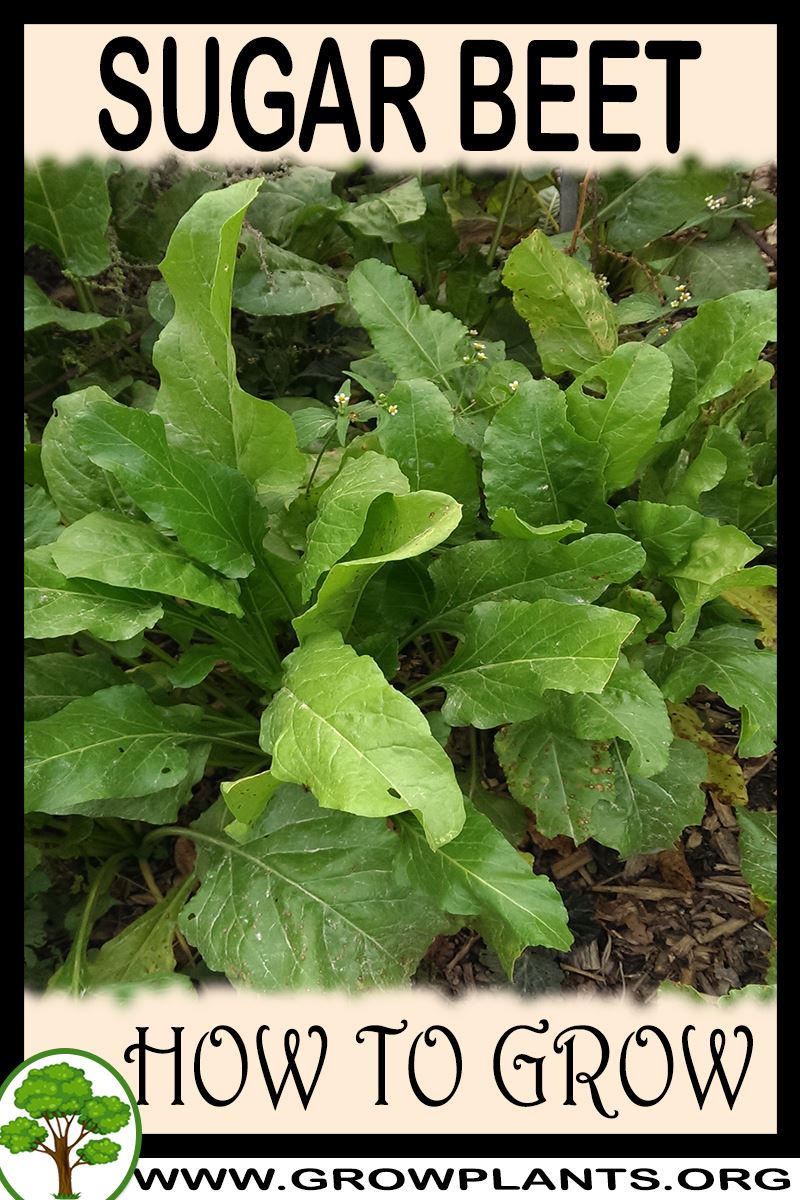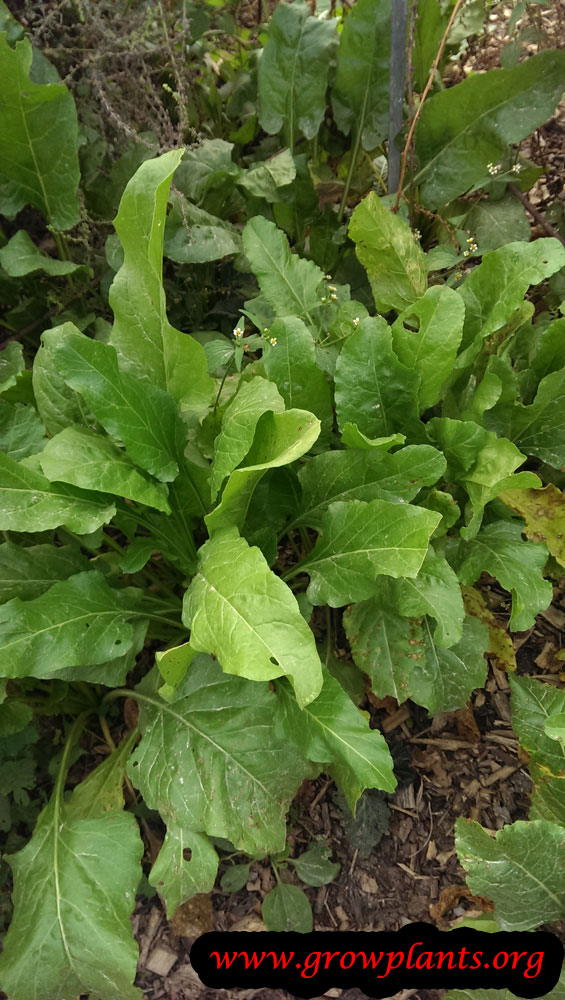
Sugar beet grow and care – taproot leaf plant of the genus Beta also known as Sugar root, Sugar beet is annual but for seeds biennial plant, can grow in temperate, mediterranean or subtropics climate and growing in hardiness zone 2-10.
Sugar beet taproots
Taproot contains a lot of sugar the taproot shaped cone, taproot colors: mostly white, but can be pale yellow.
Leaves edible can be 10-30 cm, the color green. Flowers color very small flowers grow on inflorescence color green/ yellow
Sugar beet for sale – Seeds or Plants to Buy
How to grow Sugar beet growing and care:
Well drain soil, airy soil, clean from stone or hard object, slightly acid, free weed area, cold season
What is the best way to start growing?
Seedling / Seed
Is it necessary to graft or use vegetative reproduction?
No
Difficulties or problems when growing:
Sometime the yield is too small
Planting season:
Autumn – frost free area / Spring – temperate climate
Pests and diseases:
Slugs, Aphids, prodenia
Pruning season:
All season
How to prune:
Dead or infected leaves
Size of the plant?
The root 4-9 cm (2-4 inches), the leaves 4-30 cm (2-12 inches)
Growth speed in optimal condition:
Medium growing
Water requirement:
Average amount of water / Big amount of water
Light conditions in optimal condition for growing:
Full Sun
Is it possible to grow indoor as houseplant?
No
Growing is also possible in a planter /flowerpot / containers:
Yes
Blooming information
Bloom season:
Summer
General information about the flower
Very small flowers grow on inflorescence color green
Thinning the bloom:
Better to pick up the root before it’s start to bloom
Pollination is done by:
Mostly wind, bees
Grow from seeds
Sowing requirement:
Small black seeds, usually bound in a sort of square brown and woody that containing several seeds, this structure designed to fly in the wind, so you should pay attention after flowering
Saving seeds until sowing:
Dry dark place
Sowing season:
Autumn – frost free area / Spring – temperate climate
Planting spacing:
10-20 cm
Depth of Sowing:
1-2 cm
Conditions for seeds germinate:
Moist
Watering requires for Seeds:
Small amount of water / Average amount of water / Big amount of water
Germination time:
3-20 days
Condition of seedling:
Moist, airy soil, clean from stone
Do the seeds require burying?
No
Edible leaves
Leaves harvesting season:
In warm area all year less in the summer, in cold area Spring / Summer / Autumn
How to harvest the leaves?
Trim the leaves in the base of the leave next to the root, for salad young leaves for cooked mature leaves
Information about leaves:
Depend on the species 5-70 cm, the color: purple, red, green. Sometime the vain of the leaves can be in color: yellow, red, purple
Uses of Sugar beet leaves:
Quiche, cooked, stir fry, salad
Edible Roots
Information about Sugar beet’s taproot:
Taproot shaped cone or round, taproot colors: burgundy, pink, yellow, white, red
When to pull up Sugar beet’s taproot:
About 90 days to harvest, when sow in the autumn it’s in the winter, when sow in the spring it’s in the summer
Uses of Sugar beet leaves:
Juice, sugar, cooked, jams
Scientific name:
Beta vulgaris
Categories
| Blooming Seasons |
|
|---|---|
| Edible Parts |
|
| Culinary uses |
|
| Flower colors |
|
| Climate |
|
| Harvest Season |
|
| Plant growing speed |
|
| Plant life-form |
|
| Plant Uses |
|
| Planting Season |
|
| Plants sun exposure |
|
| Watering plants |
|
| Hardiness zone |
|



